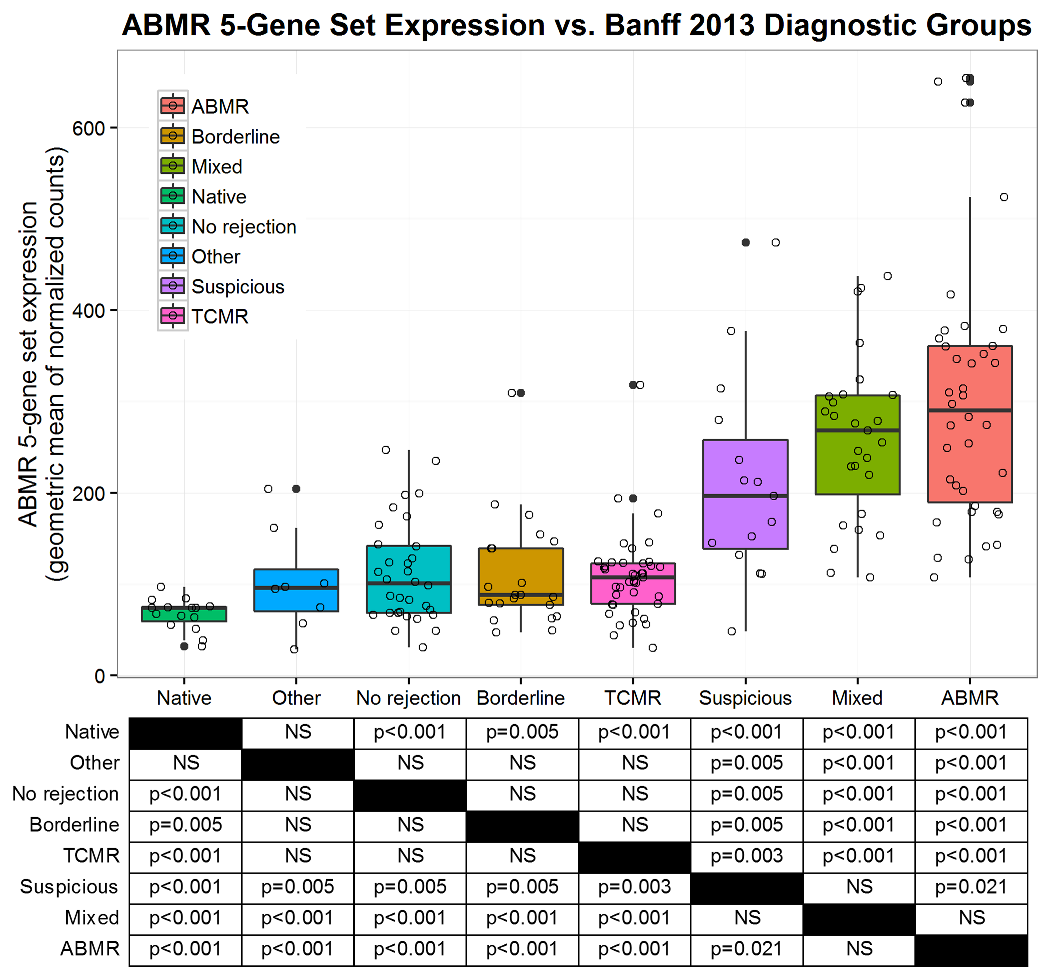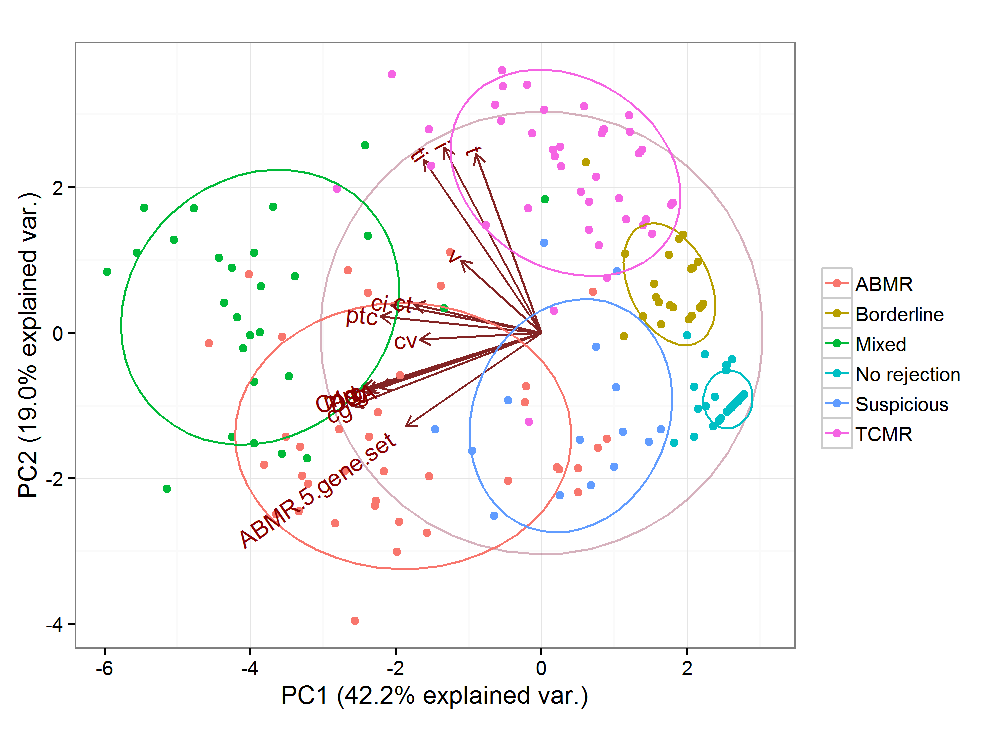Gene Expression During Development of Chronic Antibody-Mediated Rejection in Renal Allografts from Non-Human Primates: Validation of Markers Used in Humans and Sequential Changes in Protocol Biopsies.
1University of Alberta, Edmonton, Canada
2Harvard Medical School and Massachusetts General Hospital, Boston
Meeting: 2017 American Transplant Congress
Abstract number: 315
Keywords: Gene expression, Kidney transplantation, Rejection
Session Information
Session Name: Concurrent Session: Basic Chronic Rejection
Session Type: Concurrent Session
Date: Monday, May 1, 2017
Session Time: 4:30pm-6:00pm
 Presentation Time: 5:30pm-5:42pm
Presentation Time: 5:30pm-5:42pm
Location: E351
Background: RNA transcript measurement is a promising adjunct for the diagnosis and classification of antibody-mediated rejection (ABMR), however most technologies require specially processed biopsy samples. Here we assess a novel approach using the NanoString platform and routine formalin-fixed paraffin-embedded (FFPE) samples.
Methods: We analyzed protocol renal allograft biopsies from non-human primates (NHP) with a custom NanoString probe set corresponding to a previously described ABMR 34-gene set. RNA was isolated from 197 archival FFPE renal allograft samples including 102 from animals that developed chronic ABMR, 15 normal native samples, and 80 non-normal non-ABMR samples. Gene expression data were correlated with histology and serology. ROC curve analysis was used for gene set refinement.
Results: A refined set of five endothelial genes (CAV1, DARC, PALMD, PECAM1, VWF; ROC AUC=0.92) demonstrated significantly higher expression in ABMR than non-ABMR samples (p<0.001, Figure 1). This 5-gene set correlated with classic histologic features of ABMR, including g, ptc, cg, C4d, and DSA (r=0.35-0.62, p<0.001). Principal component analysis highlighted the association of the 5-gene set with ABMR as well as the ambiguity of v-lesions between ABMR and T-cell mediated rejection (TCMR, Figure 2). Most animals with ABMR demonstrated increasing expression with histologic progression. Some protocol biopsies showed increased expression before histologic evidence of ABMR.
Conclusion: These data validate in another species several molecular markers of ABMR used in humans and suggest that gene expression is more sensitive than histology for early ABMR.

CITATION INFORMATION: Adam B, Smith R, Matsunami M, Rosales I, Afzali B, Oura T, Cosimi A, Kawai T, Colvin R, Mengel M. Gene Expression During Development of Chronic Antibody-Mediated Rejection in Renal Allografts from Non-Human Primates: Validation of Markers Used in Humans and Sequential Changes in Protocol Biopsies. Am J Transplant. 2017;17 (suppl 3).
To cite this abstract in AMA style:
Adam B, Smith R, Matsunami M, Rosales I, Afzali B, Oura T, Cosimi A, Kawai T, Colvin R, Mengel M. Gene Expression During Development of Chronic Antibody-Mediated Rejection in Renal Allografts from Non-Human Primates: Validation of Markers Used in Humans and Sequential Changes in Protocol Biopsies. [abstract]. Am J Transplant. 2017; 17 (suppl 3). https://atcmeetingabstracts.com/abstract/gene-expression-during-development-of-chronic-antibody-mediated-rejection-in-renal-allografts-from-non-human-primates-validation-of-markers-used-in-humans-and-sequential-changes-in-protocol-biopsies/. Accessed December 14, 2025.« Back to 2017 American Transplant Congress
